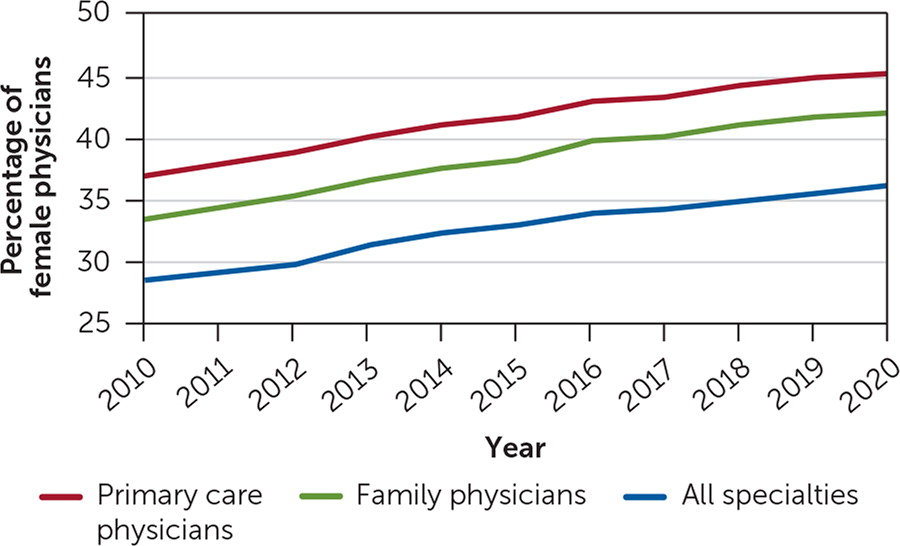
Am Fam Physician. 2021;103(1):12
Author disclosure: No relevant financial affiliations.
The growing role of women in family medicine is increasingly apparent—more than 50% of U.S. medical students are women,1 and higher shares of women are entering and graduating from family medicine residency programs.2,3 On average, female family physicians work different hours and may deliver care differently than male family physicians.4,5 Thus, understanding the changing composition of the family medicine workforce is critical for creating sustainable workforce policies and assessing patient care.
Using the American Medical Association (AMA) Physician Masterfile from 2010 through 2020, we summarized the physicians in direct patient care by sex and specialty for each year. We classified physicians by specialty into groups of family physicians, primary care physicians (with specialties in family medicine, internal medicine, general practice, and pediatrics), and physicians of all specialties. Although the binary labels of female and male do not adequately reflect the gender diversity in the physician workforce, the AMA Physician Masterfile reports physicians as female or male. Thus, we were unable to assess people of nonbinary gender in this study.
Across the 11-year period, we found that family medicine had a greater share of women than all specialties overall and had a slightly lower share of female physicians compared with all primary care physicians (Figure 1). In 2010, 33.9% of practicing family physicians were women, compared with 41.9% in 2020. The share of women in family medicine, primary care, and all specialties increased at similar rates throughout this period.

The recent increase in the share of women in family medicine is promising, and further growth is expected given the current composition of residencies and medical schools. Despite the benefit of having an equal share of women in the medical workforce, female physicians face unique challenges in the work environment that can affect their well-being.6 As the share of women in the family medicine workforce grows, it is essential for employers to formulate strategies to promote the retention and professional growth of female physicians.
